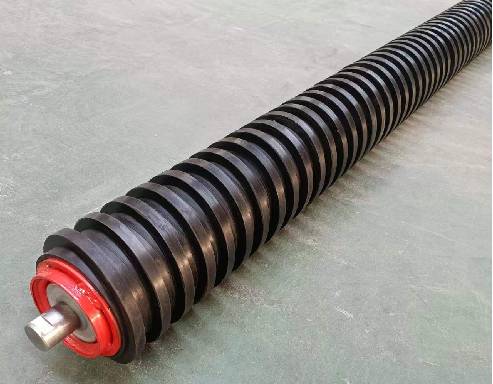self cleaning tail pulley
The Advantages and Mechanisms of Self-Cleaning Tail Pulleys
In many industrial and agricultural settings, conveyor systems play a crucial role in the transportation of materials. Among the various components of these systems, tail pulleys are essential for their functionality. Traditional tail pulleys, however, often face issues with material buildup and spillage, which can lead to inefficiencies and increased operational costs. This is where the concept of self-cleaning tail pulleys comes into play, offering a solution that enhances productivity while reducing maintenance efforts.
Understanding Tail Pulleys
Tail pulleys are typically located at the end of a conveyor belt system. They serve to redirect the belt back to its starting point and maintain belt tension. However, as materials are transported, some of them can get caught on the tail pulley. This can result in the accumulation of material, known as carryback, which not only creates a mess but also adversely affects the system's efficiency.
In traditional systems, operators often have to manually clean the tail pulley, a process that can be time-consuming and labor-intensive. Moreover, accumulated materials can lead to increased wear and tear on the pulley and belt, thereby shortening their lifespan and increasing replacement costs. To address these issues, the self-cleaning tail pulley has been developed.
How Self-Cleaning Tail Pulleys Work
Self-cleaning tail pulleys are designed with innovative features that facilitate the automatic removal of accumulated materials. These pulleys typically have a specially designed surface or feature an angled or contoured profile, which helps in dislodging the material as the conveyor operates. The design can include raised edges or grooves that effectively scrape away unwanted materials, allowing them to fall back onto the conveyor belt.
Additionally, self-cleaning tail pulleys may incorporate a tensioning mechanism that assists in keeping the belt tight and aligned. This ensures optimal contact between the pulley and the belt, further minimizing the chances of material buildup. By maintaining cleanliness and proper functioning, these pulleys contribute to smoother operations and reduced downtime.
self cleaning tail pulley

Benefits of Using Self-Cleaning Tail Pulleys
1. Reduced Maintenance Time One of the most significant benefits of self-cleaning tail pulleys is the reduction in the time and labor required for maintenance. With a system that cleans itself, operators can focus on other critical tasks, improving overall productivity.
2. Increased Equipment Lifespan By preventing material buildup, self-cleaning tail pulleys help maintain the integrity of both the pulley and the conveyor belt. This can lead to longer equipment lifespans and reduced replacement costs.
3. Improved Safety Material buildup can be hazardous, not only for equipment but also for personnel working in the area. A cleaner system reduces slip and trip hazards, promoting a safer work environment.
4. Enhanced Efficiency Self-cleaning tail pulleys ensure that the conveyor system operates at peak efficiency. With minimal carryback, more materials are transported with less waste, optimizing the overall process.
5. Lower Environmental Impact By minimizing waste and promoting effective material handling, self-cleaning tail pulleys contribute to more sustainable operational practices within industries.
Conclusion
In conclusion, self-cleaning tail pulleys represent a valuable advancement in conveyor system technology. They mitigate the challenges associated with material buildup, enhance operational efficiency, and contribute to a safer workplace. With reduced maintenance needs and increased longevity of equipment, industries that adopt these innovative solutions can enjoy both economic and environmental benefits. As technology advances, the adoption of self-cleaning mechanisms is likely to expand, transforming material handling processes across various sectors.
-
Impact Roller for Belt Conveyor – Durable Solutions for IndustryNewsNov.24,2025
-
Rubber Conveyor Rollers – Quiet, Durable, Sealed BearingsNewsNov.24,2025
-
Industrial Conveyor Belt Rollers: Durable Solutions for Harsh EnvironmentsNewsNov.24,2025
-
Idler Rollers for Belt Conveyors | Durable, Low-Noise OEMNewsNov.24,2025
-
Durable Rubber Conveyor Belt Rollers for Industrial UseNewsNov.24,2025
-
Ceramic Lagging Conveyor Pulley – Anti-Slip, Wear-ResistantNewsNov.17,2025






























